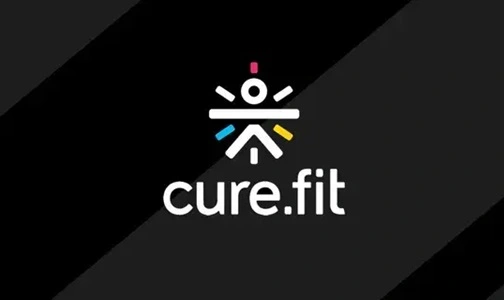Cult Fit, a part of the CureFit ecosystem, has emerged as one of India’s leading health and wellness platforms. Founded in 2016 by Mukesh Bansal and Ankit Nagori, Cult Fit offers a holistic approach to health, combining fitness, nutrition, mental well-being, and preventive care. With a unique blend of offline and online services, the brand has disrupted the traditional fitness industry and positioned itself as a one-stop solution for health enthusiasts. This article examines the Cult Fit business model and explores how the company generates revenue.
Overview of the Cult Fit Business Model

Cult Fit operates on an omnichannel business model, integrating physical fitness centers, digital platforms, and value-added services to provide end-to-end wellness solutions. Its offerings span four key verticals:
- Cult.Fit (Fitness): Group workout classes, gym memberships, and personal training sessions.
- Eat.Fit (Healthy Food): Subscription-based healthy meal delivery and DIY food kits.
- Mind.Fit (Mental Wellness): Online meditation and therapy sessions for mental health.
- Care.Fit (Preventive Healthcare): Doctor consultations, diagnostics, and health check-ups.
The company leverages a subscription-based revenue model, ensuring consistent income while offering a seamless experience across its ecosystem.
Revenue Streams
Cult Fit generates revenue through multiple channels:
a) Fitness Subscriptions
Fitness services are the cornerstone of Cult Fit’s business model. Customers can choose from various subscription plans, including:
- All Access Passes: These allow users to attend any Cult Fit center for group classes like yoga, Zumba, strength training, and dance fitness.
- Gym Memberships: Cult Fit provides memberships to its network of gyms, enabling users to access modern fitness equipment and facilities.
- Personal Training: Premium-priced one-on-one training sessions cater to customers seeking personalized fitness guidance.
Subscription prices vary based on duration (monthly, quarterly, or annual plans) and access level, ensuring options for diverse customer needs.
b) Digital Fitness
With the rise of online fitness demand, Cult Fit introduced live workout sessions and on-demand fitness content via its mobile app. These include:
- Live classes for yoga, HIIT, and strength training.
- DIY workout programs tailored to specific fitness goals.
- Guided meditation and wellness programs.
Digital subscriptions offer a cost-effective way for customers to stay fit from home while generating scalable revenue for Cult Fit.
c) Healthy Meals (Eat.Fit)
Eat.Fit focuses on healthy food delivery services, offering calorie-counted meals for weight loss, muscle gain, or overall wellness. Revenue is driven by:
- Meal Subscriptions: Customers can subscribe to daily or weekly meal plans.
- À La Carte Orders: Users can order individual meals or snacks via the app.
- DIY Food Kits: Cult Fit provides pre-measured ingredients and recipes for customers to prepare healthy meals at home.
d) Mental Wellness (Mind.Fit)
Cult Fit earns from its mental health services by offering:
- Online Meditation Programs: Guided meditations for stress relief and improved focus.
- Therapy Sessions: Virtual and in-person therapy with certified professionals on a per-session or subscription basis.
This vertical caters to the growing demand for mental health support, especially in a post-pandemic world.
e) Preventive Healthcare (Care.Fit)
Care.Fit offers diagnostic and preventive healthcare services, including:
- Doctor Consultations: Online and in-clinic consultations for general health, nutrition, and lifestyle-related concerns.
- Health Check-Ups: Comprehensive diagnostic packages and lab tests.
- Chronic Care Management: Long-term plans for managing conditions like diabetes and hypertension.
These services are available on a pay-per-use or subscription basis, ensuring steady revenue.
f) Merchandise and Equipment
Cult Fit also sells branded merchandise, including:
- Fitness gear like yoga mats, resistance bands, and dumbbells.
- Activewear and accessories.
- Health supplements and protein powders.
E-commerce revenue complements its core offerings while reinforcing the brand’s health and fitness positioning.
g) Corporate Wellness Programs
Cult Fit partners with companies to offer corporate wellness solutions, such as:
- Custom fitness programs for employees.
- Group discounts on memberships.
- Wellness workshops and mental health sessions.
These partnerships provide a stable and lucrative revenue stream, especially from large organizations.
Cost Structure
Cult Fit incurs significant costs in running its operations, which include:
a) Real Estate and Facility Management
With over 200 fitness centers in India and international markets, Cult Fit faces high costs for leasing, maintaining, and staffing these locations.
b) Technology and Content Creation
Investments in technology, such as mobile app development, video streaming infrastructure, and AI-driven personalization, are substantial. Additionally, creating high-quality fitness and wellness content adds to operational expenses.
c) Staff Costs
The company employs certified trainers, therapists, chefs, and healthcare professionals. Ensuring quality and consistency across services requires ongoing staff training and development.
d) Marketing and Branding
Cult Fit spends heavily on marketing to acquire and retain customers. Its digital campaigns, influencer partnerships, and offline promotions are crucial for maintaining visibility in a competitive market.
e) Supply Chain and Logistics
Managing healthy food delivery, merchandise, and diagnostic kits involves supply chain complexities and costs.
Competitive Advantage
Cult Fit’s unique selling points include:
- Comprehensive Ecosystem: Combining fitness, nutrition, mental health, and healthcare sets Cult Fit apart from standalone gyms or food delivery services.
- Tech-Driven Approach: AI-driven recommendations, gamified fitness challenges, and seamless app integrations enhance customer experience.
- Strong Brand Recall: Aggressive marketing and celebrity endorsements (e.g., Hrithik Roshan as a brand ambassador) boost its appeal among millennials and Gen Z.
Challenges and Opportunities
Challenges
- High Operational Costs: Leasing prime locations and managing diverse services strain profit margins.
- Intense Competition: Players like Gold’s Gym, Anytime Fitness, and digital fitness platforms like Fittr and HealthifyMe offer stiff competition.
- Retention in the Digital Space: With free fitness content available online, retaining digital subscribers is challenging.
Opportunities
- Expansion in Tier 2 and Tier 3 Cities: Untapped markets present significant growth potential.
- Global Expansion: Cult Fit has entered international markets like the UAE and aims to grow further.
- Preventive Healthcare Boom: Rising awareness of preventive health creates demand for Care.Fit’s offerings.
Financial Performance
Cult Fit has raised significant funding from investors like Temasek and Accel Partners, demonstrating strong market confidence. Post-pandemic, the company reported a surge in digital fitness and healthcare adoption, contributing to steady revenue growth. Its diversification across verticals ensures resilience against industry-specific downturns.
Conclusion
Cult Fit has successfully disrupted the health and wellness industry with its innovative, integrated business model. By addressing fitness, nutrition, and mental well-being under one umbrella, the brand has positioned itself as a leader in India’s growing health market. With continuous expansion, technological advancements, and a focus on customer experience, Cult Fit is poised to sustain its growth and redefine the way people approach wellness.

